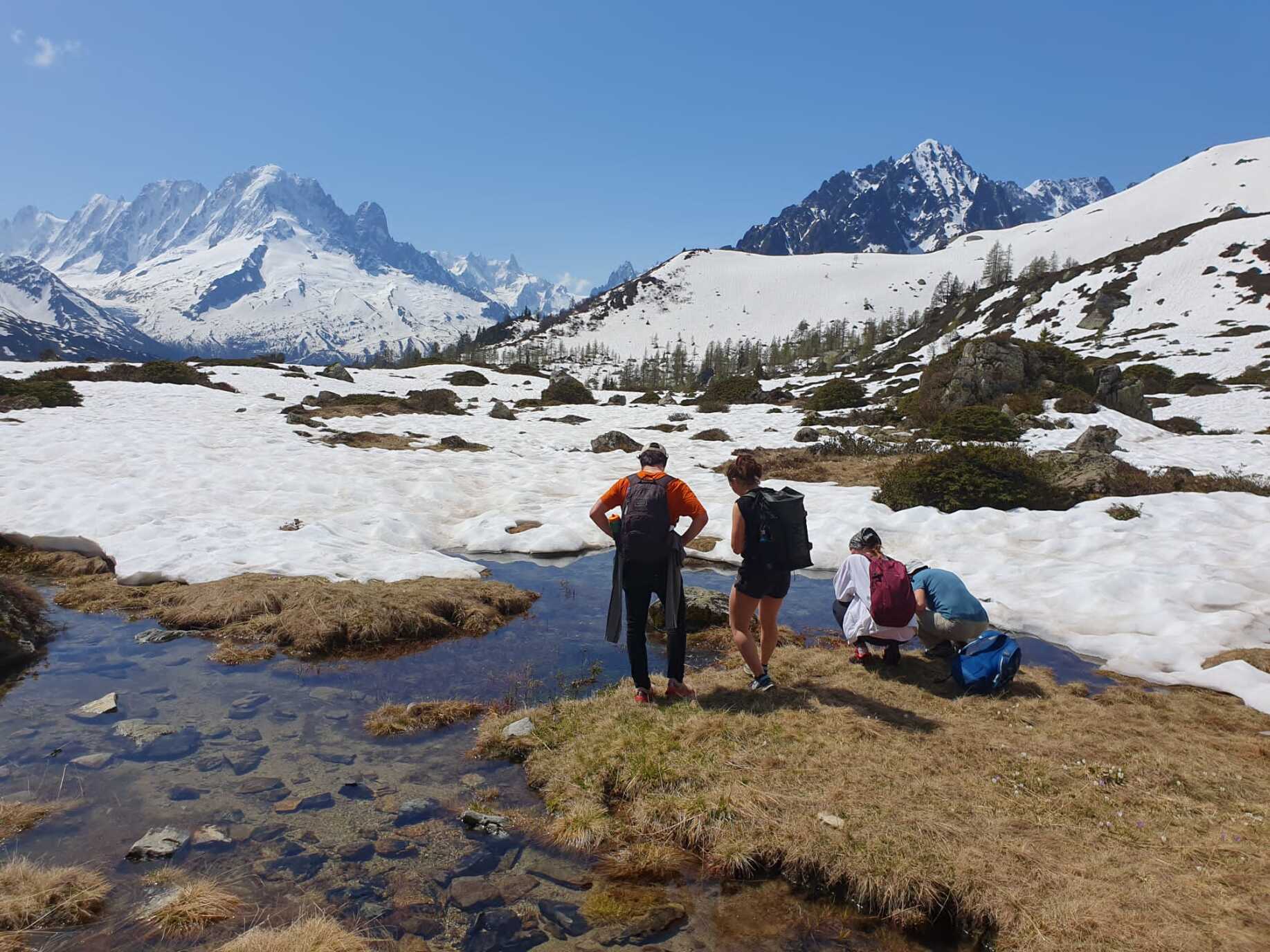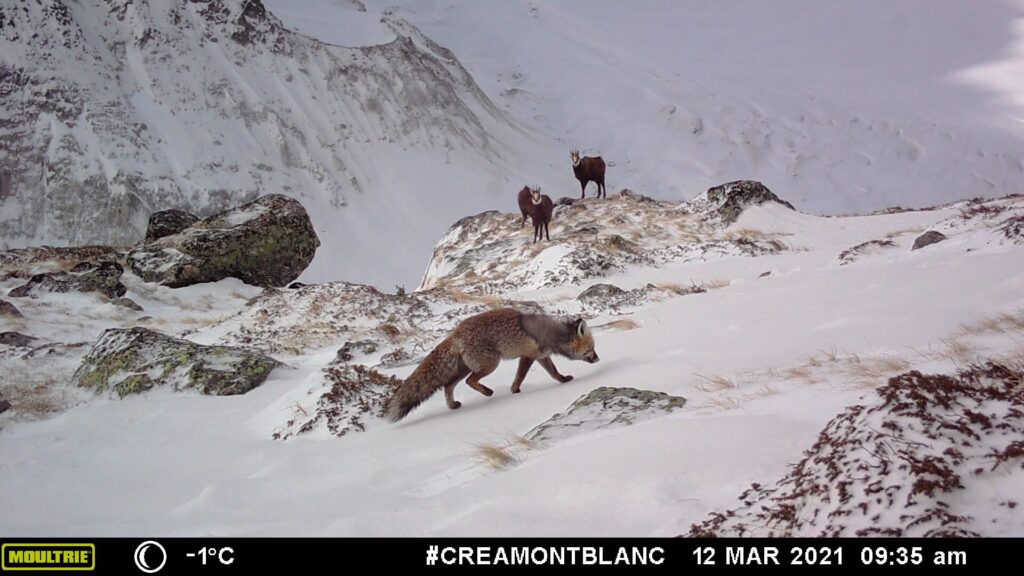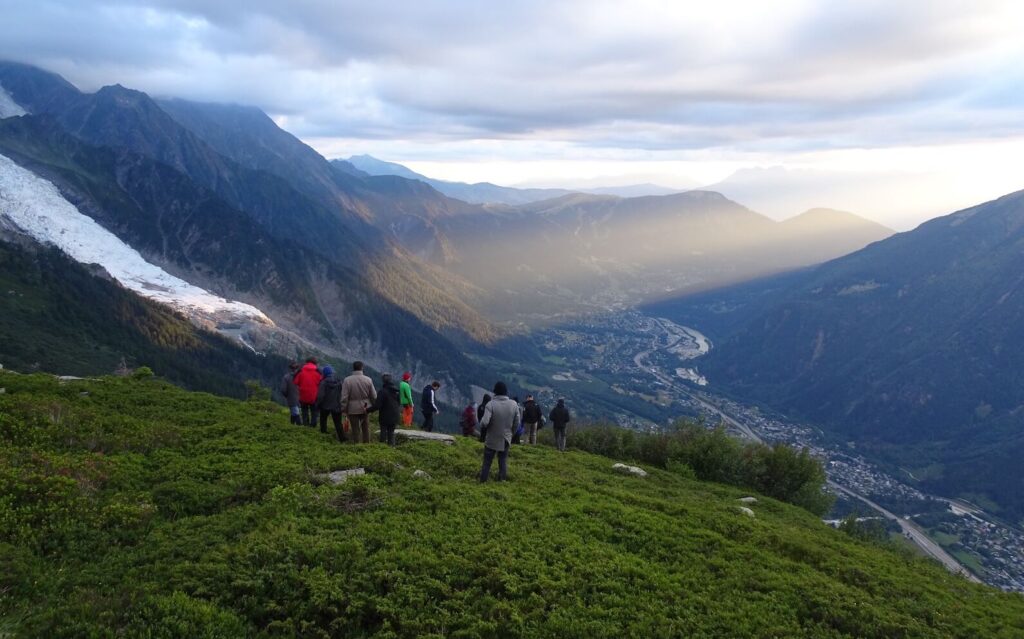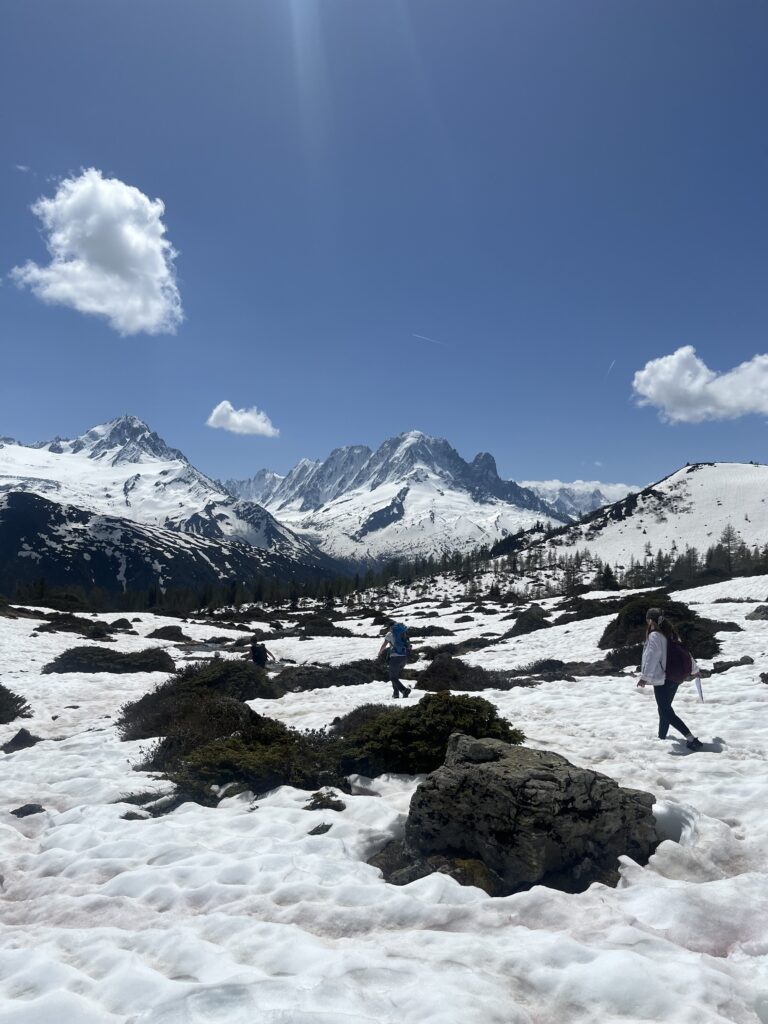
Charles Crounse

Charles Crounse
Like a predator stalking its prey, the Moultrie digital game camera lies in wait in a cover of snowy bracken. Its target, a shaggy red fox with a bushy tail, approaches at a light trot, oblivious to its unseen spectator. The camera waits until its target trots into the center of the frame, and in an instant its three millimeter lens captures a clear image of the fox while a small family of chamois looks on warily from a distance. The fox trots on, unaware that hundreds of human eyes will soon pore over its image.
Its captor, a hidden camera trap, or “piège photo” as it is known locally, is one of 40 or so carefully placed throughout the Mont-Blanc massif in the northern French alps by The Center for Research on Alpine Ecosystems (CREA). CREA is a small nonprofit organization based in the village of Chamonix-Mont-Blanc, consisting of a team of just eight members listed on their website. Its aim is simple: measure the myriad effects of climate change on mountainous ecosystems. Its practice is anything but. Representing only a fraction of CREA’s work, each camera trap is capable of taking hundreds and sometimes thousands of photos every season. Even for their industrious cast of scientists and experts, combing through every single photo to identify and categorize the fauna is a daunting task.

In order to save valuable time for their team, CREA enlists the help of citizen scientists who volunteer to assist the researching process as part of their Wild Mont-Blanc initiative. The process is straightforward – volunteers can log on to the Zooniverse website, a platform specifically targeted towards volunteer participation, and click on the Wild Mont-Blanc page. Although the project is currently on a seasonal hiatus, participants will be able to click through thousands of soon to be uploaded camera trap photos and identify the species pictured for as many images as they would like. According the project page, new pictures will be uploaded this year.
Made accessible to a wide audience, the website provides a list of species that inhabit the area to choose from and gives descriptions of each species for those who are unsure or for whom animal identification is totally foreign. Once enough participants have identified and verified the same photo, it can officially be logged as a given species for specialists to easily find and analyze.
CREA’s Wild Mont-Blanc initiative, now in its fourth year, is the organization’s largest program with 12,279 participants since its inception. They have also been running Phénoclim, a tree observation project, since 2004, in which participants select several trees to observe over the course of the season to watch their budding and flowering patterns, among other phenomena. This in-person program demands more time and hands-on engagement than the virtual Wild Mont-Blanc project, but it allows participants to develop a deeper understanding of their surroundings and to see concretely the changes in their ecosystems. Alice de Chilly, the former head of mission development at CREA, emphasized the importance of crowdsourcing their data processing.
“We need to gather data, and there are about 1,000 participants in Phénoclim while we are just eight at CREA,” she said.

CREA’s final project, cleverly titled Aux Arbres Citoyens, which translates from French to “To the trees, citizens” to play on the lyrics from the French national anthem, is similar but on a smaller scale. Participants simply scan QR codes hung from tree branches to answer a quick survey detailing the tree’s phenology, enabling CREA to track the progress of the tree’s seasonal cycles as they are altered due to rapid climate change.
While these projects comprise the better part of CREA’s volunteer programs, they are not the only ways the organization brings non-scientists into the fold. The nonprofit has hosted a number of field trips and workshops with local schools in the area, presenting students with rare opportunities for experiential learning outside the classroom and on the slopes of the Mont-Blanc massif. Tasks performed by students in the past include observing tadpoles in vernal poles, which are drying up earlier and earlier every year, and animal print tracking, as species begin to move up the mountain to remain in cooler temperatures.
The citizen science programs employed by CREA are clever and efficient, but this is not the first time they have been done. As far back as 1900 with the creation of the Audubon Christmas Bird Count, scientists have turned to citizen science to carry out large scale, detail oriented work that would be too difficult or too time consuming for just a small group of experts to conduct themselves.
The work being done at CREA draws from the very same principle as the Christmas Bird Count: democratizing work to help scientists and non-scientists alike.
These non-scientists are an especially crucial facet of citizen science programs. While they do serve to help scientists and researchers, these programs are equally targeted at the greater public in order to break down the conventional barriers between scientists and non-scientists. The work is open to all who wish to volunteer, irrespective of their education levels or industries of profession. Citizen science thus represents a generally non-discriminatory field by which outside perspectives can find their way into scientific practices. Straying from the more conventional exercise of scientists presenting data to a sometimes skeptical public audience, citizen science grants volunteers a peek behind the curtain and a chance for fully transparent practices, strengthening bonds between academics in the field and volunteers.

The citizen benefits of participating in programs like Phénoclim and Wild Mont-Blanc are twofold. Not only do they allow volunteers to work in conjunction with professionals and therefore develop deeper understandings of each other, but they also ignite a curiosity and a passion to better understand the natural world. Famed sociobiologist E.O. Wilson, who is widely considered in his field to be the father of biodiversity, hypothesized that it is human nature to seek to understand the natural world around us. The innate drive to be curious and to appreciate the wonders of nature still exists, as seen by the thousands of tourists who flock to the base of Mont-Blanc every summer. Seeing the region is one thing, while learning and understanding is another altogether.
According to de Chilly, programs like Wild Mont Blanc and Phénoclim offer opportunities for tourists and locals to deepen their understanding of the places they explore. In a world where tourists, despite their best intentions, can have many adverse effects on a local ecosystem, citizen science programs hope to educate the public and turn them into better global citizens.
“These programs won’t get rid of overtourism,” de Chilly said. “However, if we can educate tourists, they might change their behaviors and while passing through nature they will better protect it.”
CREA plans to further its efforts and add new citizen science programs in the near future as they try to engage a broader audience in the fight against climate change. Citizen science is already on the rise globally, both for its ability to harness the collective power of the public and for its ability to bridge gaps within the scientific community, and de Chilly said she hopes this trend continues.
“There are more and more programs that exist,” she said. “It’s good because before there were scientists like us in one corner and society in another, but now science and society can reunite.”